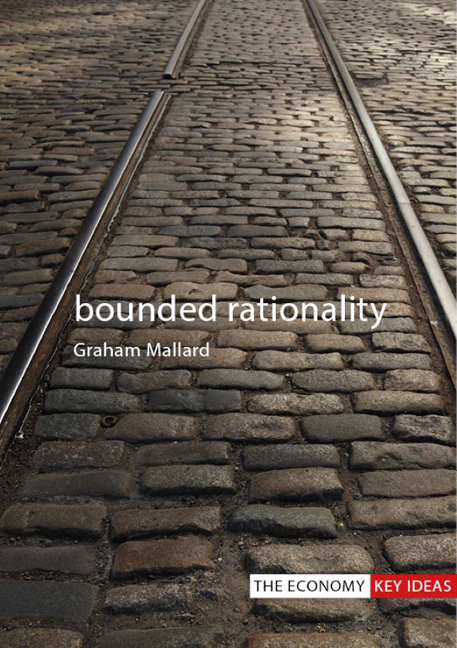3 - Approaches of non-optimization
Published online by Cambridge University Press: 20 December 2023
Summary
The first general approach to modelling bounded rationality is to dispense with the assumption that decision-makers seek to optimize the outcomes of their decisions, whatever those outcomes may be, and to instead assume they seek to find outcomes that are simply good enough. Herbert Simon coined the term satisficing to refer to such decision-making: an archaic word of Northumbrian origin that simply means satisfying. Simon maintained that satisficing is fundamental to modelling bounded rationality because it vastly reduces the amount of information decision-makers need to process to reach any given choice, making decisions possible with cognitive capacities that are insufficient to make them optimally.
As illustrated in Figure 1.5, there are at least four ways in which satisficing has been modelled within the literature: satisficing search, the use of heuristics, probability-based responding and the use of algorithms. These will be explored in turn in this chapter, although the ways in which they overlap and interconnect with one another make this division somewhat arbitrary in places.
Satisficing search
Consider again the scenario outlined in Chapter 1 and represented in Figure 1.2, in which a consumer has to decide how to spend her budget on bottles of wine and wedges of cheese. As outlined in the introductory chapter, complete rationality implies she knows all possible combinations of the two goods that are available for her to buy; she is able to rank the available combinations in order of how much utility she would gain from each; and she is able to identify from the combinations she can afford the precise combination that brings her greatest utility. Employing a satisficing search process significantly reduces these mental demands. Instead of seeking to identify the single combination that maximizes her utility, she instead seeks to find a combination with which she is satisfied. The first step in doing this is to establish her aspiration levels, which in this case refer to the minimum amounts of wine and cheese with which she would be satisfied. These are illustrated in Figure 3.1 as ALW and ALC. In this case, she is content as long as the combination comprises at least two bottles of wine and one wedge of cheese. She then simply engages in a search process, going from shop to shop, or flicking from website to website, to find a way of buying a combination that meets these minimum criteria with the budget at her disposal.
- Type
- Chapter
- Information
- Bounded Rationality , pp. 31 - 60Publisher: Agenda PublishingPrint publication year: 2020

